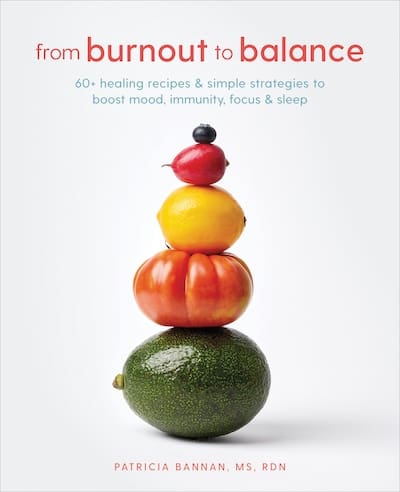This article originally appeared on Livestrong.com.
If you’re looking for reasons why to add more seafood to your eating patterns, here are nine seafood benefits that are hard to pass up.
From seafood stew to uni pasta, there’s a variety of scrumptious ways to get your seafood fix. And when you find yourself craving fish for your next meal, you can rest easy knowing it’s good for you. “Low in total calories and unhealthy saturated fat, seafood may be one of the premier foods to maximize your health,” says Misti Gueron, M.S., RDN, a Los Angeles-based medical nutrition therapist. So if you’re wondering what to eat for dinner, why not go with seafood? Here are nine seafood benefits and compelling reasons why you should add it to your weekly mix.
1. Seafood helps with weight loss
Regularly eating seafood as part of a healthy diet can help keep you trim. “Seafood is one of the most slimming foods you can get your hands on. It’s unbelievably low in calories,” says Karen Ansel, M.S., RDN, co-author of “Healthy in a Hurry: Simple.” Consider a tuna steak. One meaty six-ounce tuna steak contains only about 185 calories, yet it delivers 41 grams of filling protein. When you compare that with a six-ounce sirloin steak that tips the scale at 342 calories and packs only 35 grams of protein, the fish is the clear winner. In fact, a study published in the European Journal of Clinical Nutrition ranked steamed white fish, such as halibut, as the number two most filling food — second only to the fullness factor of boiled potatoes. Researchers think white fish might be particularly filling due to its high protein content and influence on the hormone serotonin, which is in part responsible for hunger signals.
2. Seafood is heart-healthy
Seafood is a major source of omega-3 fatty acids, important nutrients for supporting heart health. “Eicosapentaenoic acid (EPA) and docosahexaenoic acid (DHA) are the most utilized forms of omega-3s in the human body. They are found in seafood, especially in fatty fish like salmon, tuna and trout,” says Misti Gueron, M.S., RDN. And since the body does not efficiently produce EPA and DHA on its own, it’s important to get these nutrients from food — primarily cold-water fatty fish — or high-quality omega-3 supplements. Two servings of omega-3-rich fish per week or a daily supplement can help you reach this goal.
3. Eating fish is good for your eyes
The omega-3s DHA and EPA in fatty fish also play essential roles in eye health. The body’s highest concentration of DHA is found in the retina of the eye. High DHA concentrations in the retina allow you to see in varying lighting conditions (like when a room goes from dark to light, forcing your eyes to instantly adjust; this is powered by the benefits of DHA). Omega-3s can also protect your eyes as you age. “Numerous studies have indicated that those with a higher intake of omega-3s in their diet may have healthier eyesight well into their late years,” says Misti Gueron, M.S., RDN.
4. Seafood can boost IQ
According to the Food and Drug Administration (FDA) and Environmental Protection Agency (EPA), seafood consumption is especially important for pregnant or nursing women and moms with young children. Eating fish on a regular basis helps with the growth and development of children’s brains and can even helps boost IQ. FDA research shows that when women of childbearing age consume the recommended two to three servings of fish per week, their babies can gain an estimated 2.6 IQ points. Unfortunately, most pregnant and nursing moms are not eating the recommended amount of seafood, in part due to concerns about the mercury content. The FDA and EPA cautions women to avoid four types of fish that have high mercury content: tilefish from the Gulf of Mexico, shark, swordfish and king mackerel. But there are a number of safer types of fish to eat, including salmon, pollock, tuna (light canned), tilapia, catfish and cod, according to the FDA.
Read more about omega-3s and brain health — from infancy onward.
5. Seafood is protein rich
Eating an adequate amount of protein is essential to keeping your metabolism running, your blood sugar levels stable and your energy high. And the good news is that seafood is rich in protein. In fact, it’s a complete protein source that contains all of the essential amino acids that can help build and repair tissues. And because seafood has less connective tissue than red meats and poultry, it is easier to digest. A typical three-ounce serving of cooked fish or shellfish provides about a third of the average daily recommended amount of protein.
6. Seafood helps with depression
While more research still needs to be done, a number of studies suggest that people who eat more fish are less prone to suffer from depression. “While it’s not certain whether this is because people who are depressed have lower levels of omega-3 fats or because people who are depressed don’t consume sufficient omega-3s, eating a few servings of fish a week certainly couldn’t hurt,” says Karen Ansel, M.S., RDN. What’s more, vitamin B-12 can help too. “Many kinds of seafood — especially clams, mussels and crab — are packed with vitamin B-12, which also helps protect against dementia and depression,” adds Ansel.
7. Fish can boost immunity
Not only is vitamin D essential for bone health, recent research shows it may also help protect against the common cold. Unfortunately, if you don’t spend enough time in the sun or if your body has trouble absorbing the vitamin, you may not be getting enough of it. Fatty fish is a good source of vitamin D, and wild-caught seafood is probably your best bet for the sunshine nutrient. Harvard researchers tested samples of 24 farm-raised salmon and 20 salmon caught in the wild and found that farm-raised salmon had only about 25 percent of the vitamin D content of its wild-caught brethren. The researchers think this is because the farm-raised salmon has less vitamin D in their edible flesh because of the lack of vitamin D in their food.
8. Sustainable seafood is good
A third of the global fish population is dangerously depleted, but choosing to only eat sustainable seafood can help. And thankfully, sustainable seafood is easy to find. Unless you live in certain coastal areas, you are most likely purchasing seafood from overseas. In fact, about 90 percent of the seafood in the United States is imported. To find out where your fish is coming from, check out the country-of-origin label (COOL), which is on all seafood sold in the United States. While where your seafood is from may provide an indication of how it’s farmed, it doesn’t really give you the whole picture. “Sustainable seafood is caught or farmed in ways that consider the long-term vitality of specific harvested species and the well-being of the oceans and the fisheries-dependent communities,” says Misti Gueron, M.S., RDN. To learn about the sustainability of seafood, the Monterey Bay Aquarium’s Seafood Watch program offers printable consumer guides for all 50 states, which are perfect to keep on hand for when you’re home or traveling. The guides help you find ocean-friendly seafood choices based on the region and season and provide three categories to make your menu ordering easy: “Best Choices,” “Good Alternatives” and “What to Avoid.”
9. Canned seafood can be inexpensive
If cost and convenience are a challenge, canned seafood, such as canned albacore tuna, canned salmon and canned sardines, is less expensive than fresh fish. Cans also offer a long shelf life, which makes them easy to stock away in your cabinets and use at your convenience. For the ultimate convenience, try ready-to-eat flavored cans or pouches of fish that require no prep or cook time. “If you buy the kind in portable pouches, you can enjoy a protein-filled snack or lunch just about anywhere,” says Karen Ansel, M.S., RDN.





